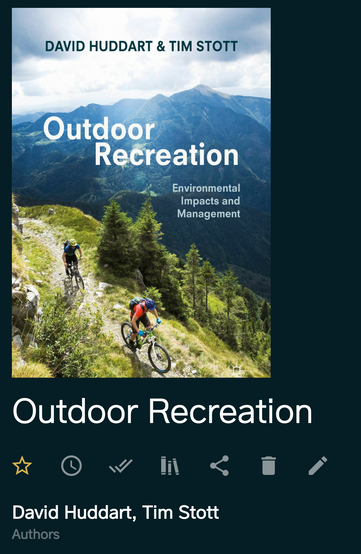Managing Environmental Impacts
- Jak

- Nov 25, 2022
- 3 min read
We're still busy with guided mountain tours and kids outdoor activities, but our wet canyoning tours have been closed for almost a month now. It is during this time of the year that we do a full review of our operating procedures.
In receipt of our highest levels of attention, this week, have been our environmental policies.
During train commutes, to and from some of our Gwanaksan Forest School classes, we've been reading though Outdoor Recreation: Environmental Impacts and Management by Huddart and Stott.
A lot of the sources and studies cited within the text are already familiar to us (some first hand), but this textbook is a fantastic resource for anyone in the outdoor industry - either looking to re-review the topic or begin their study.
Rereading about the problems facing canyoning, in particular, and confronting the issues again brings everything forward in our minds once again.
After each of our canyoning tours, we always wrote in our tour journal, which we used to monitor wildlife sightings, water quality and flora health in our venues. This has been useful to track our impacts on the canyons and has given us strong indicators about whether or not other people have been visiting locations too.
We're happy to say that we have observed no adverse impacts on any of the venues which we use exclusively. Obviously, popular venues like Deokpung Valley have seen huge amounts of development, but this has had nothing to do with us (and has affected our decisions about continued use of the location).
As of November 2022, we are still the only canyoning tour provider in South Korea. There is no organizing or governing body. For these reasons, we feel it is essential that we set the standard.
Looking ahead, we will continue with our policy of offering small tours - limiting the impacts we have on trails, wildlife, vegetation, etc.
We're also going to improve our pre-tour info packs, which we send to customers, to further address environmental concerns.
Tours in Korea have run a little differently to the way we have experienced (as guides) tours in Europe. There are cultural and location specific reasons for this. One notable difference is, we don't hike up the approach trail in speedos. Generally, we do the hiking sections of tours in shorts and long sleeved rash vests - often wearing hats too.
As our approach trails are largely in the shade too, we think that we can now make a pre-tour request that customers do not wear sunscreen. This will further limit the risk of introducing contaminants to water sources. We are also going to explicitly request that customers no longer wear anti-perspirants.
Our venues are quite far apart, and do require sizeable car journeys to reach.
We try and limit our own journeys by the way we group tours together over periods, but considering the nature of tourism and leisure in Korea, and where population centers are, this is still the biggest issue for us. Unless we can come up with some satisfactory solution, this will potentially affect availability of some locations and tours.
Another thing that will be reviewed as we move into 2023 is how we take bookings from agents. At present, agencies will book clients onto tours before any consultation is meant with us, which means we're already a step or two behind when we approach our guests with all the essential pre-tour info. Whilst we value referrals from third parties, and they have been very beneficial for us, we are going to make sure that we guide people through the booking process to ensure their expectations are met - and that our expectations are also put forward too.
In short, we're always trying to improve our Environment policies (they have been at the core of how we've structured tours). And Outdoor Recreation is a good read too!











Comments